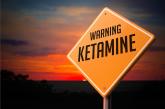Opinion

Overcoming the challenges of COVID-19 for Alzheimer’s patients in long-term care, research
- Author:
- Faisal A. Islam, MD, MBA, BCMAS
- Ranbir Dhillon, MD
- Zia Choudhry, MD, PhD, MBA
Clinicians working with AD patients during the pandemic might need to establish contingency plans, said Dr. Faisal A. Islam, Dr. Ranbir Dhillon,...
Opinion

How to identify, evaluate, and treat patients with ‘Percocet use disorder’
- Author:
- Faisal A. Islam, MD, MBA, BCMAS
- Zia Choudhry, MD, PhD, MBA
Clinicians should be made aware of the adverse effects and treatment protocols associated with Percocet, say Dr. Faisal A. Islam and Dr. Zia...
Opinion

Separating myth from reality: The role of cannabinoids in COVID-19
- Author:
- Faisal A. Islam, MD, MBA, BCMAS
- Zaid Ulhaq Choudhry
- Zia Choudhry, MD, PhD, MBA
A clinical dilemma is posed when users procure counterfeit cannabis, say Dr. Faisal A. Islam, Zaid Ulhaq Choudhry, and Dr. Zia Choudhry.
Opinion

Evaluate, manage the stress response in susceptible individuals affected by COVID-19
- Author:
- Faisal A. Islam, MD, MBA, BCMAS
- Mohammed S. Islam, MD
- Zia Choudhry, MD, PhD, MBA
- And Ayodeji Jolayemi, MD
Clinicians should explore the role of steroid therapy as a means of treating mental health patients experiencing stress tied to the pandemic.
Opinion

Revisiting Xanax amid the coronavirus crisis
- Author:
- Faisal A. Islam, MD, MBA, BCMAS
- Zaid Ulhaq Choudhry
- Zia Choudhry, MD PHD MBA
The pandemic has instilled a sense of fear in people, leading to social repercussions, say Dr. Faisal A. Islam, Zaid Ulhaq Choudhry, and Dr. Zia...
Opinion

Preventing arrhythmias and QTc prolongation in COVID-19 patients on psychotropics
- Author:
- Faisal A. Islam, MD, MBA, BCMAS
- Mohammed S. Islam, MD
- Zia Choudhry, MD, PhD, MBA
Psychotropics associated with QTc interval prolongation should be discontinued (or substituted with a low-risk agent) if a patient presents with...
Article

Recognizing and treating ketamine abuse
- Author:
- Faisal A. Islam, MD, MBA, BCMAS
- Junaid A. Bhatti, MD, PhD
- Zia Choudhry, MD, PhD, MBA
Many patients use illicit ketamine, either for recreational purposes or as self-treatment to control depressive symptoms.
Article

Urine drug screens: Not just for job applicants
- Author:
- Faisal A. Islam, MD, MBA, BCMAS
- Zia Choudhry, MD, PhD, MBA
Consider the urine drug screen as a tool for improving patients’ treatment adherence and clinical outcomes.
Article

What role does asthma medication have in ADHD or depression?
- Author:
- Faisal A. Islam, MD, MBA, BCMAS
- Zia Choudhry, MD, PhD, MBA
Asthma medications comprise several drug classes, including leukotriene antagonists and steroid-based inhalers. These drugs have been implicated...
Article
What to do when adolescents with ADHD self-medicate with bath salts
- Author:
- Faisal A. Islam, MD, MBA, BCMAS
- Zia Choudhry, MD, PhD, MBA
- Walter Duffy, MD
The stimulant, amphetamine-like effects of bath salts make the drug attractive to adolescents with ADHD.
Article
Is your patient using cocaine to self-medicate undiagnosed ADHD?
- Author:
- Muhammad Puri, MD, MPH
- Yana Bekker, DO
- Faisal A. Islam, MD, MBA, BCMAS
Effective treatment modalities tend to prioritize management of substance abuse, but the patient’s age may dictate the overall assessment plan....
